Roy Lichtenstein Value: Top Prices Paid at Auction

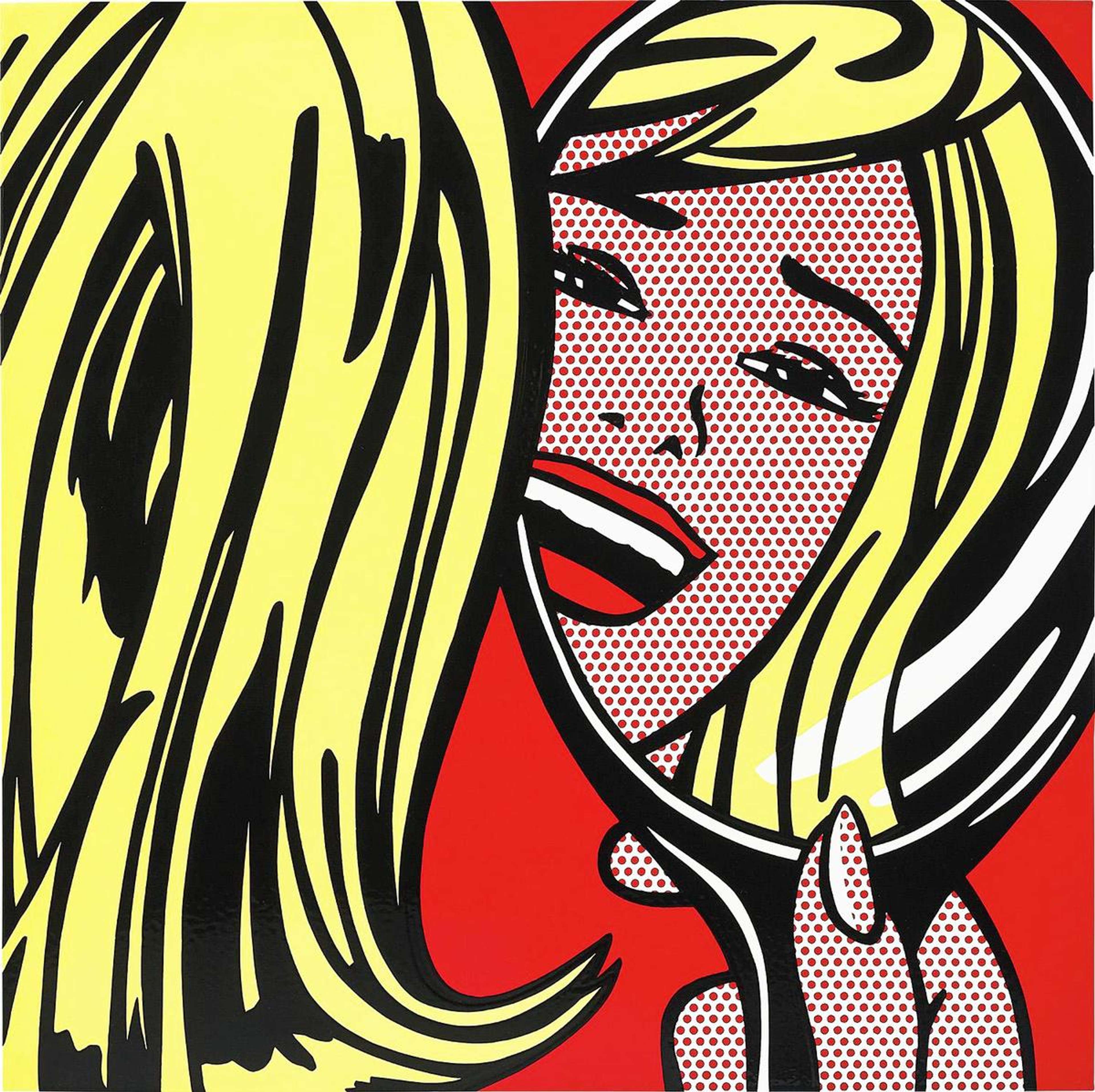 Girl In Mirror © Roy Lichtenstein 1964
Girl In Mirror © Roy Lichtenstein 1964
Interested in buying or selling
Roy Lichtenstein?

Roy Lichtenstein
290 works
Roy Lichtenstein, a pioneer of Pop Art, famously elevated comic books and advertisements to high art. His print market peaked at £9.5 million in sales value in 2019, with 249 lots sold. Since then, sales values have fluctuated slightly, but the increased volume of works on the market has led to a stable average selling price–£285,398 in 2023–reflecting sustained demand for his art. Lichtenstein's auction record is £63.4 million for Nurse (1964) at Christie’s in 2015. This article explores the highest prices paid on the public market for Lichtenstein's artwork.
£63.4M for Nurse
($95,365,00 USD)
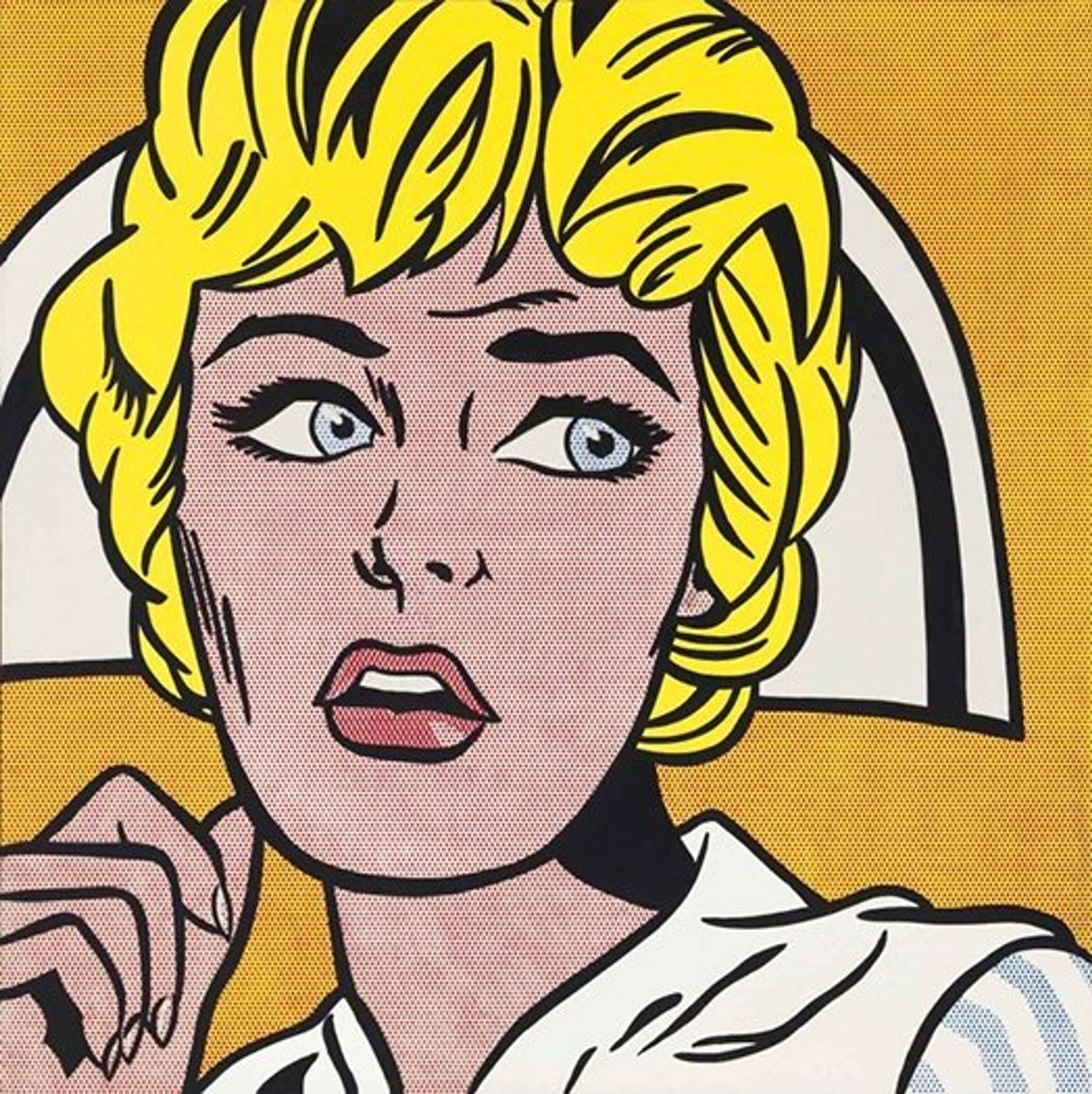 Nurse © Roy Lichtenstein 1964
Nurse © Roy Lichtenstein 1964Featuring Lichtenstein’s iconic bold colours, Ben-Day dots and comic-book theme, Nurse (1964) set the world auction record for the artist when it sold in Christie’s The Artist’s Muse auction in November 2015. Painted in 1964– at the height of Lichtenstein’s career–Nurse was first bought by the advertising executive Leon Kraushar, who assembled one of the greatest collections of Pop Art ever known, before it was acquired industrialist Karl Ströher, whose family owned the Wella haircare brand.
£36.7M for Woman With Flowered Hat
($56,123,750 USD )
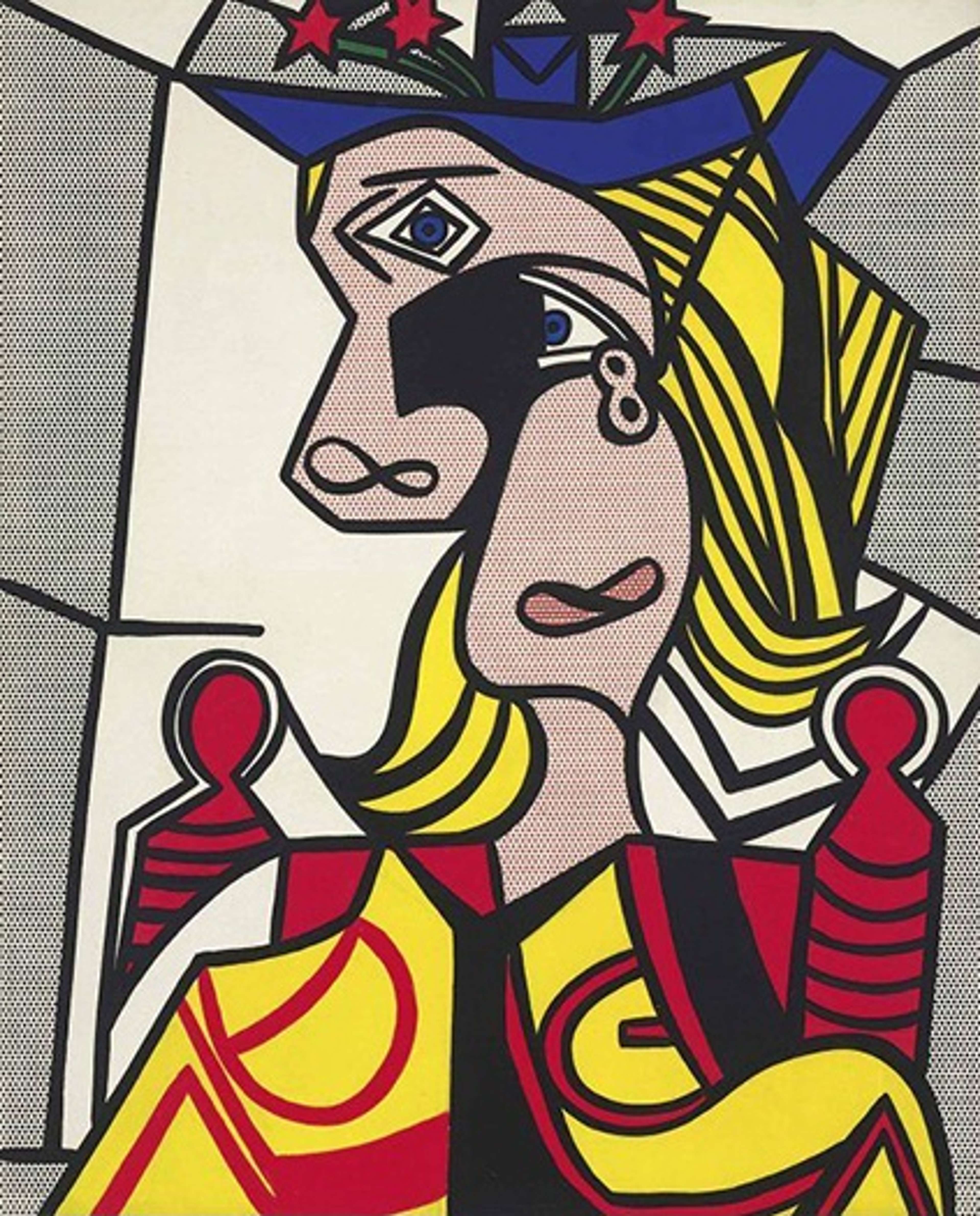 Woman With Flowered Hat © Roy Lichtenstein 1963
Woman With Flowered Hat © Roy Lichtenstein 1963Between 1962–63, Lichtenstein created four paintings inspired by the works of Pablo Picasso. Woman With Flowered Hat (1963) was the last in this series. Unlike the Picasso version, however, Lichtenstein changed the woman’s hair from brown to blonde. “The Picasso is converted to my pseudo-cartoon style and takes on a character of its own,” the artist had said. The work sold at Christie’s in May 2013 in a bidding battle lasting almost six minutes.
£36.6M for Nude With Joyous Painting
($46,242,500 USD)
 Nude With Joyous Painting © Roy Lichtenstein 1994
Nude With Joyous Painting © Roy Lichtenstein 1994In July 2020, Lichtenstein’s Nude With Joyous Painting (1994) secured its place among the artist’s top three auctioned works, becoming the most expensive lot in Christie’s ONE: A Global Sale of the 20th Century. Bids poured in from New York, Hong Kong, and over the telephone, with the piece ultimately selling for £36.6 million after 10 minutes of intense bidding. Created in the final years of Lichtenstein’s life, the painting is regarded as the most significant work in his last great series of nudes. Even artist Jeff Koons remarked that “the later women paintings and nudes that Roy did are just absolutely gorgeous.”
£27.8M for Sleeping Girl
($44,882,500 USD)
 Sleeping Girl © Roy Lichtenstein 1964
Sleeping Girl © Roy Lichtenstein 1964Sold at Sotheby’s Contemporary Art Evening Auction in May 2012, Lichtenstein's Sleeping Girl (1964) was one of the standout lots, alongside a painting by Francis Bacon that sold for the same price. The artwork sparked fierce bidding from five parties across China, Europe, and the Americas before being claimed by an unidentified telephone bidder, setting a new record for the artist at the time. Previously owned by Beatrice and Philip Gersh, who acquired the work the year it was created, the painting remained in their collection for nearly half a century before making its auction debut and selling for £27.7 million.
£27.0M for I Can See the Whole Room!...and There's Nobody in it!
($43,202,500 USD)
 I Can See The Whole Room!…And There’s Nobody In It! © Roy Lichtenstein 1961
I Can See The Whole Room!…And There’s Nobody In It! © Roy Lichtenstein 1961Painted in 1961, I Can See The Whole Room!… (1961) is among the most important of Lichtenstein’s early Pop Art works. Although the artist had been painting for over 15 years by then, it was only in the early ’60s that he delved into the cartoon imagery that established his reputation. The man depicted in the painting was inspired by a Steve Roper cartoon story from 1961, though Lichtenstein added the bright yellow background as a nod to the colours found in supermarket packaging. The artwork was sold at Christie’s Post-War Contemporary Evening Sale in November, 2011 for £26.9 million.
£26.9M for The Ring (Engagement)
($41,690,000 USD)
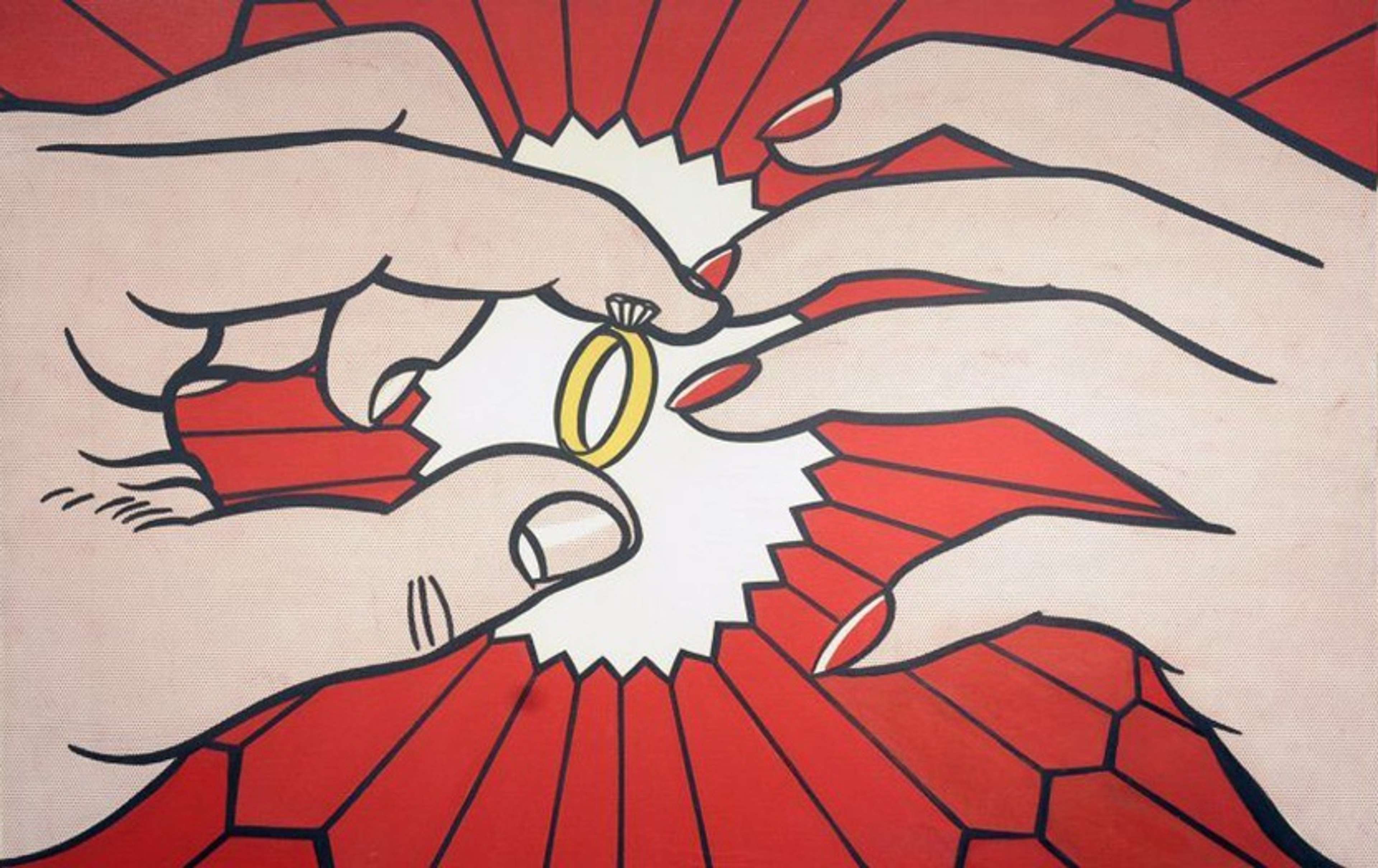 The Ring (Engagement) © Roy Lichtenstein 1963
The Ring (Engagement) © Roy Lichtenstein 1963When the renowned antique dealer Jean-Marie Rossi purchased Lichtenstein’s The Ring (Engagement) (1962) just a year after it was painted, he paid the equivalent of only $1,000 (USD). Fifty-three years later, the painting sold for over £26.9 million at Sotheby’s Contemporary Art Evening Auction in May 2015, making it the second-most expensive sale of the evening. This iconic depiction of romance has been featured in major museum exhibitions, including those at the Tate galleries in London, the Fondation Beyeler, Centre Pompidou, and the Art Institute of Chicago.
£26.5M for Ohhh...Alright...
($42,642,500 USD)
Setting an auction record when it sold for £26.4 million at Christie’s in November 2010, Lichtenstein’s blue-eyed, flame-haired heroine in Ohhh…Alright… (1964) was part of a series of lovelorn girls he painted between 1961 and 1965. When asked why he depicted so many foresaken female characters during that period, Lichtenstein remarked, "Well, I was in the middle of a divorce. I don’t know if that had an effect, but it might have.” The original illustration was taken from the DC comic book Secret Hearts, where the girl’s sweetheart cancels their date over a telephone call.
£24.2M for Kiss III
($31,135,000 USD)
 Kiss III © Roy Lichtenstein 1962
Kiss III © Roy Lichtenstein 1962Like many of Lichtenstein’s other early works from 1962, Kiss III is filled with passion and drama. “I was interested in anything I could use as a subject that was emotionally strong,” Lichtenstein later explained. “Usually love, war, or something that was highly charged and emotional subject matter to be opposite to the removed and deliberate painting techniques”. The painting was among the top works sold at Christie’s Post-War and Contemporary Art Evening Sale in May 2019 selling for £24.2 million.
£21.9M for Red And White Brushstrokes
($28,247,500 USD)
 Red And White Brushstrokes © Roy Lichtenstein 1965
Red And White Brushstrokes © Roy Lichtenstein 1965Initially, Lichtenstein’s 1960s Brushstroke series was thought to be a sly commentary on the Abstract Expressionism movement, and the artist himself encouraged this interpretation. “It’s taking something that originally was supposed to mean immediacy, and I’m tediously drawing something that looks like a brushstroke... I want it to look as though it were painstaking,” Lichtenstein explained. However, he was also quick to clarify, “The things that I have apparently parodied I actually admire.” Red And White Brushstrokes (1965) far exceeded its low estimate when it sold at Christie’s in May 2017.
£20.7M for White Brushstroke 1
($25,417,000 USD)
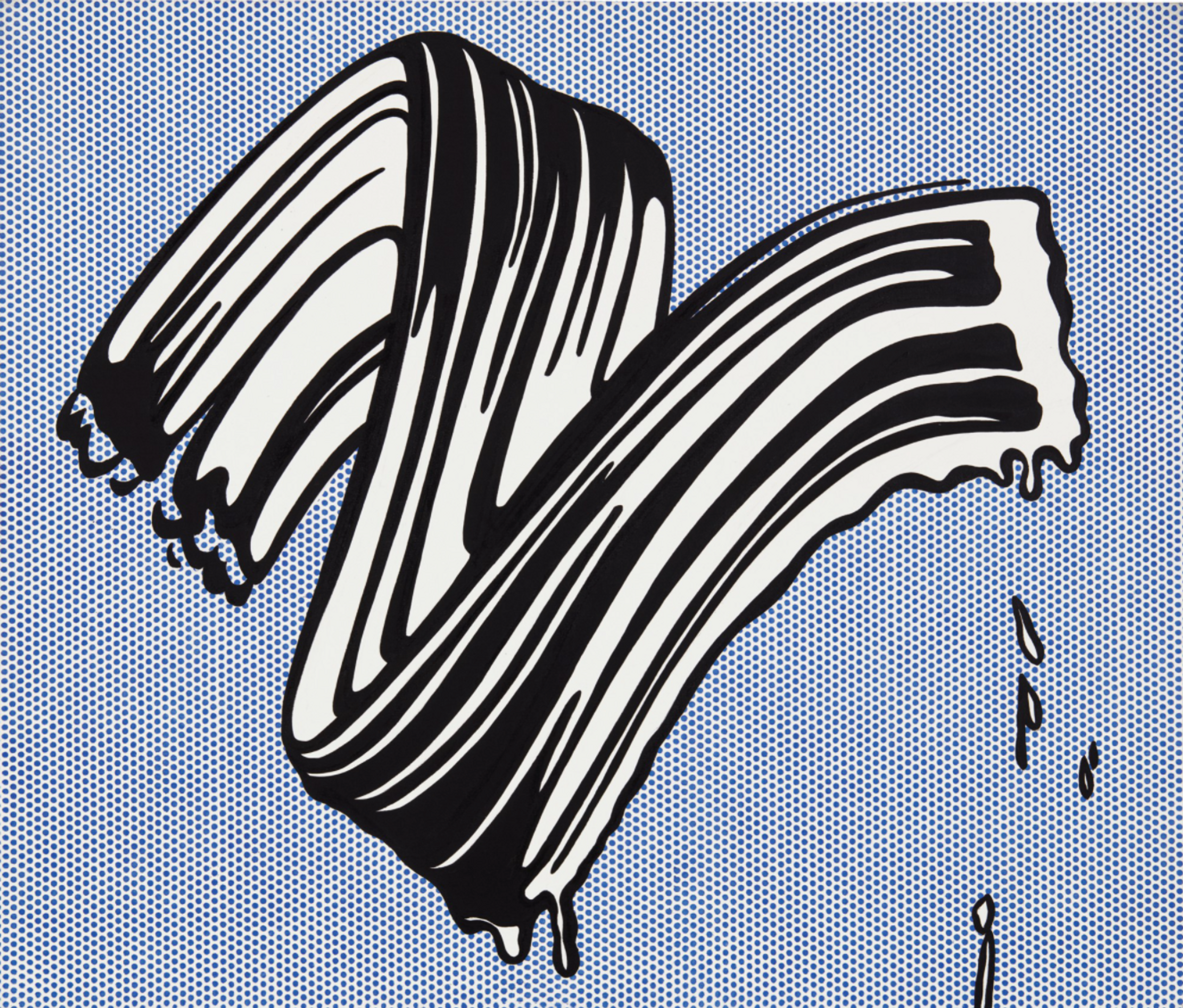 Image © Sotheby's / White Brushstroke 1 © Roy Lichtenstein 1965
Image © Sotheby's / White Brushstroke 1 © Roy Lichtenstein 1965White Brushstroke 1 (1965) is one of Lichtenstein’s most insightful explorations of Contemporary art, where he examines the painterly brushstroke through his iconic Pop style. This piece challenges viewers to rethink what qualifies as part of the contemporary canon. Sold for £20.6 million at Sotheby’s in June 2020, the artwork boldly combines a tangible gesture with Lichtenstein’s cartoonish aesthetic and trademark dotted background.
